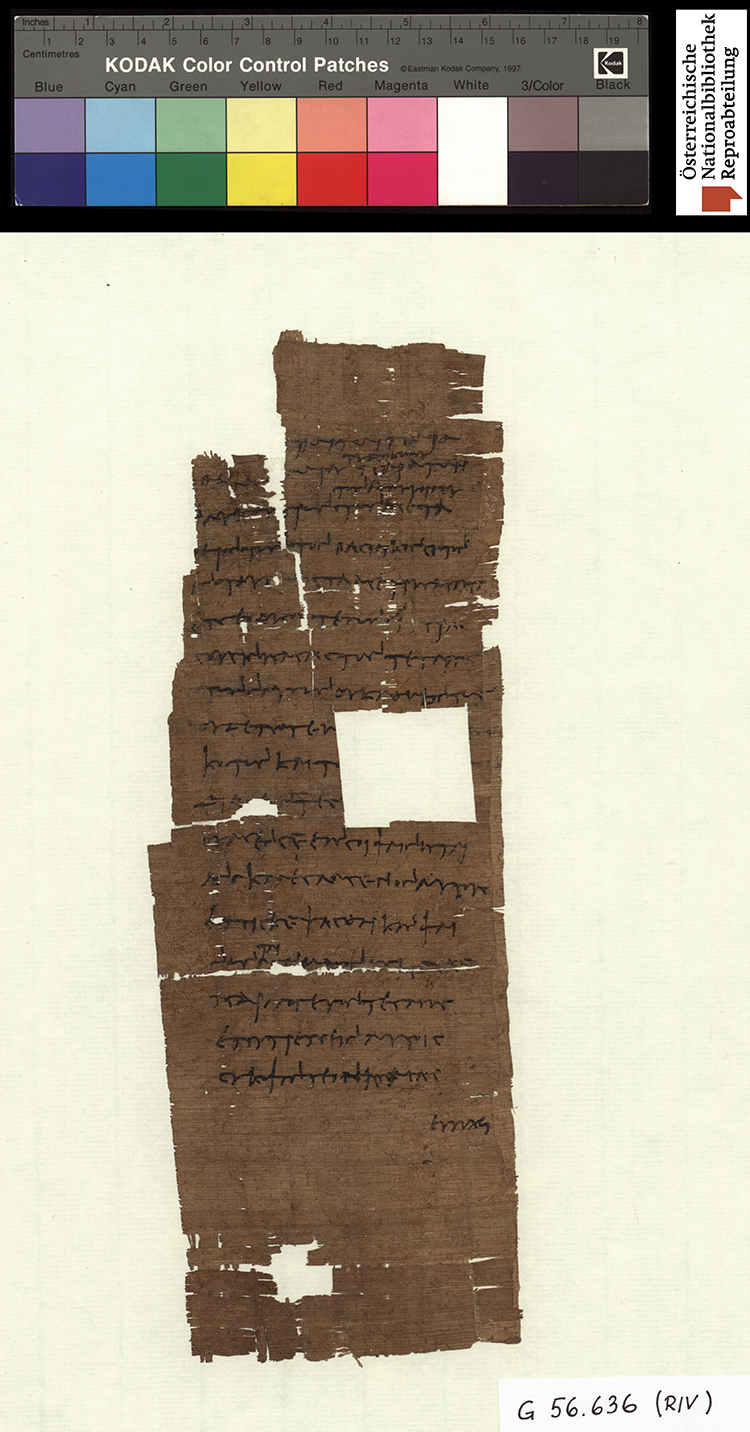G 56636 Recto
G 56636 recto: Dimensions: 32.8 x 11.7 cm. Date: before 21 January 191 BC. Provenance unknown (Herakleopolis?). This papyrus preserves a virtually complete petition, a so-called hypomnema, to an official. The dating of this text is based upon palaeographical and prosopographical considerations, combined with the date on the verso. The palaeographical features of the document on the recto suggest that it should be dated to the end of the third or to the beginning of the second century BC, the latter end of this time period being preferable. In this time period two years are possible: year 14 of Ptolemy IV Philopator (209/08) and year 14 of Ptolemy V Epiphanes (192/91). However, the fact that Athenodoros, the dioiketes in our text is most probably identical with the homonymous central dioiketes who was in office between approximately 197 and 190 rules out the earlier date. This document constitutes a rich source of new information for a number of reasons. First, as a valuable prosopographical contribution, it supplies new evidence for a dioiketes already known in the early second century BC. Secondly, the wider economic background of this document places it in the context of the transportation of grain by water, which, despite having been the most fundamental and crucial function of the Egyptian transport system in the Graeco-Roman period, is still not known in sufficient detail. It throws some light on the shipping of royal grain, probably for military purposes. Furthermore, it provides us with new evidence for the activities of naukleroi. For the first time, in this document we can see naukleroi engaged in the transportation of royal grain. This is our earliest evidence for a group of naukleroi organised to such an extent that they act together in petitioning an official. So far evidence for organised groups of naukleroi is known only from the first century BC, although those documents reveal a higher level of organisation than that seen in our text. In addition, the dispute concerning the tetarte ton naulon revealed by this papyrus also offers us some insight into the tax status of the naukleroi or, alternatively, into the freight tolls they normally paid. Finally, this text is a welcome addition to our list of petitions to various officials of the Ptolemaic bureaucracy. As for the wider historical context of this papyrus, it is very tempting to see the transportation of royal grain probably for the purpose of military rations in a document from the early second century BC as connected with the great Theban revolt (205-186 BC). If this hypothesis is correct, the naukleroi in our document transported grain for provisioning the government troops engaged in re-establishing Ptolemaic rule over the country. It is, however, equally possible that our papyrus affords us an insight into the routine provisioning of a garrison under normal circumstances. The papyrus was published by C. A. La’da as CPR XXVIII 11.

